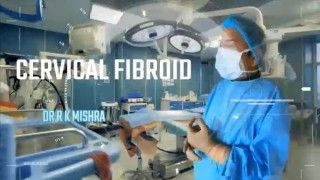Total Robotic Hysterectomy with suturing of uterine artery
Add to
Share
294 views
Report
2 months ago
Description
Total robotic hysterectomy has emerged as one of the most advanced and precise approaches for the surgical removal of the uterus. By integrating three-dimensional visualization, wristed instruments, and improved ergonomics, robotic platforms have enhanced the safety and efficacy of hysterectomy procedures, particularly in complex cases. A key aspect of this surgery is the secure control of the uterine arteries, which play a central role in minimizing blood loss and ensuring hemostasis. Suturing of the uterine artery during robotic hysterectomy represents a refined and meticulous technique that offers superior vascular control compared to traditional energy-based methods. Indications for Total Robotic Hysterectomy Robotic hysterectomy is indicated in a wide range of benign and malignant gynecological conditions, including: Symptomatic fibroids Endometriosis and adenomyosis Abnormal uterine bleeding unresponsive to medical management Early-stage endometrial and cervical cancers Large uteri where conventional laparoscopy is technically challenging Surgical Technique Overview 1. Patient Positioning and Port Placement The patient is placed in lithotomy with steep Trendelenburg position. Standard four or five robotic ports are inserted, along with an assistant port, to allow optimal visualization and access. 2. Uterine Manipulation and Exposure A uterine manipulator is introduced to facilitate movement and visualization of the pelvic structures. The robotic arms provide stable traction, enabling precise dissection in confined spaces. 3. Skeletonization of Uterine Artery The peritoneum is incised, and the uterine artery is carefully dissected and skeletonized at its origin from the internal iliac artery or near its ascending branch adjacent to the cervix. 4. Suturing of Uterine Artery Unlike conventional bipolar coagulation, robotic suturing allows direct ligation of the uterine artery with non-absorbable or delayed absorbable suture material. A 2-0 delayed absorbable suture is typically used. Intracorporeal knot tying with robotic wristed instruments ensures precise placement. This method offers definitive vascular control, reduces collateral tissue damage, and decreases the risk of delayed bleeding. 5. Completion of Hysterectomy Following secure control of the uterine vessels, the broad ligament, round ligament, and adnexal structures are dissected. The uterus is separated from the cervix and surrounding tissues. The vaginal cuff is then sutured using barbed or interrupted sutures. Advantages of Suturing Uterine Artery in Robotic Hysterectomy Superior Hemostasis: Direct suturing provides robust control of bleeding. Reduced Thermal Spread: Avoids excessive use of energy devices, preserving surrounding tissues. Safety in Difficult Cases: Particularly beneficial in patients with distorted anatomy, previous surgeries, or large fibroids. Long-term Vascular Control: Decreases chances of postoperative secondary hemorrhage. Conclusion Total robotic hysterectomy with suturing of the uterine artery represents a blend of technological advancement and surgical finesse. By combining the precision of robotic platforms with the time-tested security of suturing, this technique enhances patient safety, minimizes intraoperative blood loss, and optimizes surgical outcomes. As robotic surgery continues to expand, such refined methods will play an increasingly important role in advanced gynecological practice.
Similar Videos






